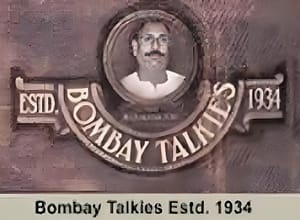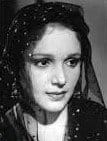
Bombay Talkies was not just a film production company.
it was a revolution in Indian cinema. Founded in 1934, it played a pivotal role in laying the foundation of modern Bollywood and introduced several iconic talents to the Indian film industry. As one of the earliest and most organized film studios in India, Bombay Talkies stood for innovation, professionalism, and the modernization of filmmaking during a time when Indian cinema was still struggling to find its voice.
Origins and Founding Vision
Bombay Talkies was established in Malad, then a suburb of Bombay (now Mumbai), by Himanshu Rai and Devika Rani, two prominent figures in the nascent Indian film industry. Himanshu Rai was a lawyer by training but developed a keen interest in cinema during his time in Europe. He had already worked on several Indo-European film projects, such as “The Light of Asia” (1925) and “Prapancha Pash” (A Throw of Dice, 1929), when he returned to India with a vision to modernize Indian cinema.
Rai, along with his wife Devika Rani—India’s first true film diva and a trained actress from London—laid the foundation for Bombay Talkies. Their vision was clear: they wanted to bring professionalism, structured training, and international standards to Indian filmmaking, which until then was largely fragmented and disorganized.
Studio Setup and Infrastructure
Unlike many of the informal film setups at the time, Bombay Talkies was structured as a corporation. It had a board of directors, shareholders, and a systematic management setup. The studio complex in Malad was one of the most advanced of its time, equipped with state-of-the-art technology imported from Germany and Europe. It housed shooting floors, editing rooms, sound stages, and laboratories, making it one of the first integrated film studios in India.
One of the major innovations introduced by Bombay Talkies was the concept of soundproof studios. In an era when outdoor shooting was the norm and sound quality was inconsistent, Bombay Talkies brought in modern acoustics and advanced sound recording systems that elevated the production value of Indian films.
The Bombay Talkies Team
Bombay Talkies was more than just a production house; it was a grooming ground for artists, technicians, and future legends of Indian cinema. Himanshu Rai and Devika Rani were not only producers but also nurturers of talent. They brought together a team of dedicated filmmakers, writers, technicians, and actors who would go on to become legends in their own right.
The studio’s technical head was Franz Osten, a German filmmaker who had collaborated with Himanshu Rai on earlier projects. Osten brought with him the precision and discipline of German filmmaking, which influenced the aesthetic style of Bombay Talkies films.
Notable members of the Bombay Talkies team included:
- Devika Rani: The leading lady and face of the studio, Devika Rani starred in many of its early films and was widely regarded for her poise, elegance, and acting prowess.
- Ashok Kumar: Originally a lab assistant, Ashok Kumar became one of Indian cinema’s first superstar actors through Bombay Talkies. His rise from behind the camera to leading man was a turning point for Indian film heroes.
- Kardar, Amiya Chakravarty, and Sashadhar Mukherjee: Directors and producers who worked at Bombay Talkies and later went on to create their own legacy in Indian cinema.
- S.D. Burman, Saraswati Devi, and others: Musical talents who helped shape the sound of Bombay Talkies and influenced Indian film music for decades.
Pathbreaking Films
Bombay Talkies made several landmark films that changed the course of Indian cinema. Their films combined social realism with entertainment, addressing themes like caste discrimination, poverty, women’s rights, and nationalism, all while maintaining mass appeal.
Some of the most notable films produced by Bombay Talkies include:
- “Jawani Ki Hawa” (1935): One of the early hits, starring Devika Rani and Ashok Kumar. It set the template for romance in Indian cinema.
- “Achhut Kanya” (1936): A bold film that tackled the issue of untouchability, starring Devika Rani and Ashok Kumar. It was a massive success and is considered one of the first socially conscious films in Indian history.
- “Jeevan Naiya” (1936): Another socially relevant film with Ashok Kumar in a lead role, this project helped define Bombay Talkies’ signature blend of message and melodrama.
- “Kangan” (1939), “Bandhan” (1940), and “Jhoola” (1941): These films further solidified Bombay Talkies’ reputation for creating socially aware cinema with popular appeal.
The themes often revolved around the tension between tradition and modernity, the rights of women, and the fight against social evils—subjects that were groundbreaking at the time.
Ashok Kumar: The Accidental Star
One of the most remarkable stories from Bombay Talkies is the rise of Ashok Kumar. Initially a lab technician, Ashok Kumar (born Kumudlal Ganguly) was cast in a leading role opposite Devika Rani in “Jeevan Naiya” when the original actor walked out. His natural acting style, boyish charm, and screen presence struck a chord with audiences.
With the massive success of “Achhut Kanya” and other films, Ashok Kumar became one of the first male superstars in Hindi cinema. His career, which began with Bombay Talkies, would span decades and influence generations of actors.
The Tragedy of Himanshu Rai’s Death
Himanshu Rai’s sudden death in 1940 was a major blow to the studio. As the visionary behind Bombay Talkies, Rai’s leadership had held the organization together. After his death, Devika Rani took over the reins, becoming one of the first women to lead a film company in India. She continued to produce films and introduced new talents, including Dilip Kumar (Yusuf Khan) in the film “Jwar Bhata” (1944).
However, internal conflicts began to surface. Disagreements among the board members, directors, and key personnel led to a decline in the studio’s cohesion and productivity.
Split and Formation of New Studios
By the mid-1940s, Bombay Talkies began to fragment. Key members like Sashadhar Mukherjee, Rai Bahadur Chunilal, and Ashok Kumar left the company and formed a new studio—Filmistan—in 1943. Filmistan would go on to become a successful production house in its own right, continuing the legacy of structured and professional filmmaking that Bombay Talkies had started.
Devika Rani continued to manage Bombay Talkies for a few more years, but her interest waned, especially after her marriage to Russian painter Svetoslav Roerich in 1945. She retired from the film industry soon after.
Final Films and Closure
Bombay Talkies continued to produce films sporadically after the 1940s, but the golden era had clearly passed. The company struggled to find the same level of success without its original team and visionaries. The final productions failed to make a mark, and the studio eventually ceased operations in the early 1950s.
However, the physical space and legacy of Bombay Talkies did not disappear. The studio premises in Malad were later used by other filmmakers, and some parts were integrated into other production facilities over time.
Legacy and Influence
Though Bombay Talkies as a company no longer exists, its legacy is deeply embedded in the history of Indian cinema. It transformed filmmaking from a chaotic and uncertain venture into a more structured, respectable, and impactful profession.
Key aspects of its legacy include:
- Professionalism in Indian Cinema: Bombay Talkies was among the first to treat film as both an art and a business, with organized infrastructure, a trained workforce, and disciplined production schedules.
- Introduction of Talent: The studio launched the careers of legends like Ashok Kumar and Dilip Kumar and paved the way for many actors, directors, and musicians.
- Socially Responsible Cinema: At a time when most films focused on fantasy or mythological themes, Bombay Talkies dared to address real social issues—often ahead of its time.
- Women in Power: Devika Rani’s role as a producer and leader was groundbreaking, setting a precedent for women in film leadership roles.
Modern Homage: The Film “Bombay Talkies” (2013)
To commemorate the 100 years of Indian cinema, four leading filmmakers—Karan Johar, Zoya Akhtar, Dibakar Banerjee, and Anurag Kashyap—collaborated on an anthology film titled “Bombay Talkies” in 2013. Though not directly about the studio, the film paid tribute to the spirit of storytelling and cinematic evolution in India—a spirit that Bombay Talkies helped to define.
Conclusion
Bombay Talkies was more than just a film studio; it was a movement. It symbolized the birth of structured, socially conscious, and technically sophisticated Indian cinema. From nurturing stars like Ashok Kumar and Dilip Kumar to creating timeless films that addressed social reform, Bombay Talkies was a beacon of innovation and integrity.
Its influence continues to echo in Bollywood today. The studio may no longer operate, but the values it stood for—quality, discipline, talent, and progressive thought—remain foundational to Indian cinema’s ongoing journey.



4 thoughts on “Bombay Talkies: The Iconic Pillar of Indian Cinema”